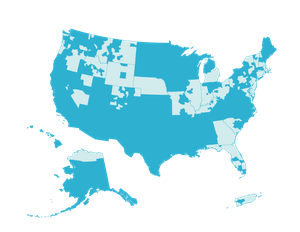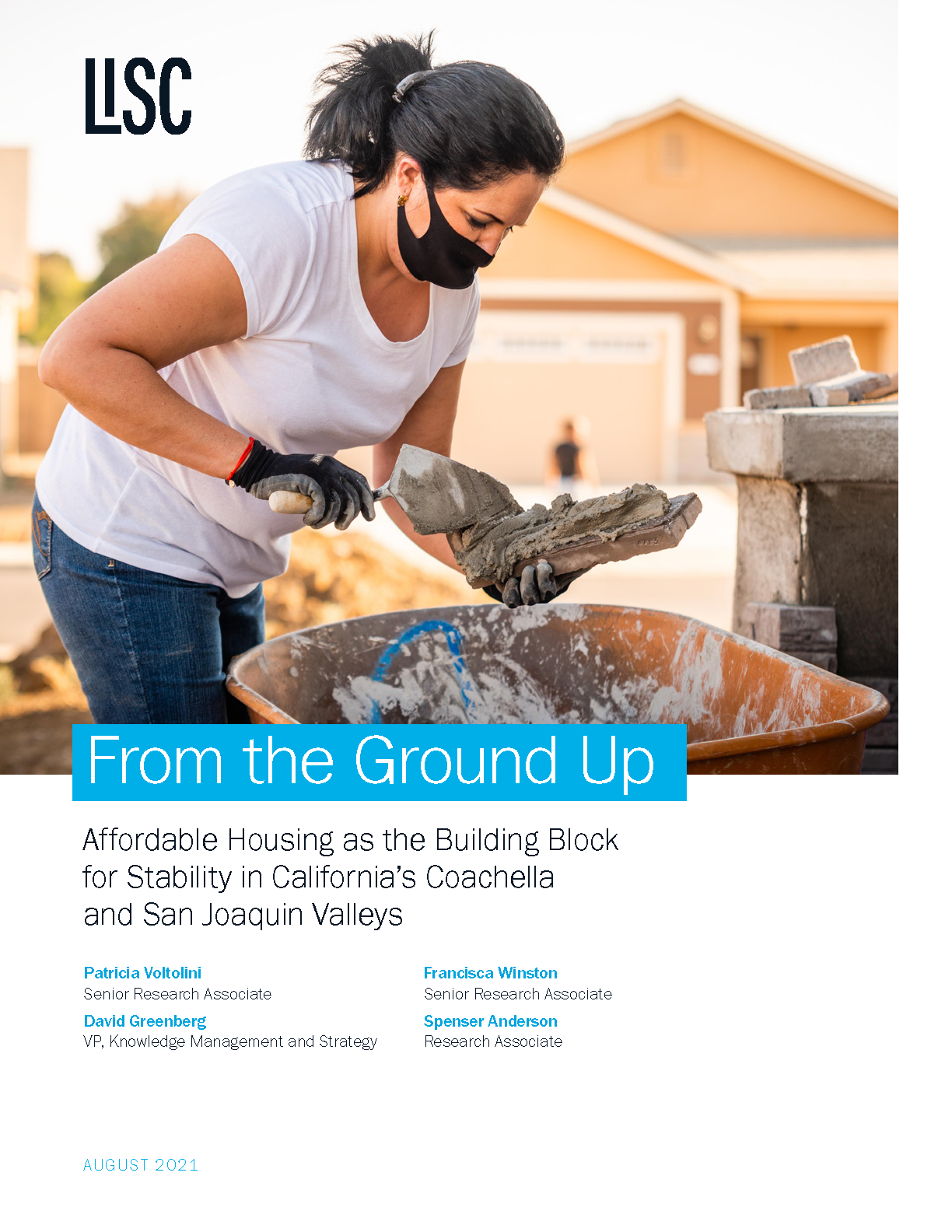From the Ground Up
A new white paper from LISC's Research and Evaluation team offers quantitative and qualitative evidence of how intensive and collaborative community development in rural America raises standards of living and civic engagement in concrete and enduring ways. Through case studies of communities in California’s agricultural Coachella and San Joaquin Valleys, the report shows the statistically significant impact of affordable housing investment on local mortgage values, and qualitative analyses reveal how those investments, combined with intentional investment in civic and physical infrastructure, led to local stability and revitalization, the growth of a middle class, and even changes in political representation. The report offers strategy and policy recommendations that can serve as guides to community stakeholders, practitioners and legislators across the rest of rural America.
Executive Summary
Promoting Stability and Revitalization in Coachella and the San Joaquin Valleys
The Coachella and San Joaquin valleys are two predominantly rural areas in Southern and Central California, respectively. The San Joaquin Valley is home to almost 4.2 million people, and there are about 430,000 residents in the Coachella Valley. In both communities, just over half of the population is Hispanic or Latinx. In the San Joaquin Valley, 19.6 % of people live below the federal poverty line and 39% are housing cost burdened. Among residents of the Coachella Valley, 18.4% live in poverty, with 46% facing a housing cost burden. These conditions are exacerbated by racial inequities, as the poverty rate of nearly 25% for Hispanic or Latinx residents is double the rate for white non-Hispanic residents (12%) in both valleys.1
These areas are also home to two of California’s most prolific community development organizations— the Coachella Valley Housing Coalition (CVHC) and Self-Help Enterprises (SHE). Both are long-established organizations that have produced thousands of affordable homes and provided a variety of much-needed community support services, from child care and afterschool activities to financial and homeownership counseling, among many others.
Despite the importance of their work, research on the impact of community development and affordable housing in rural areas has been limited. A handful of studies have demonstrated the positive spillover effects of affordable housing development, but these studies have largely focused on urban areas.2 This paper attempts to fill that research gap by examining community development efforts in Coachella and the San Joaquin valleys through a mixed-methods approach. We focused our study on a subset of towns where CVHC and SHE generated a level of affordable housing investment that could reasonably be expected to influence community trajectories as a whole.3 Through interviews with community development practitioners, local residents, civic leaders, and public officials, along with a series of quantitative statistical analyses including an adjusted interrupted time series (AITS) analysis of home mortgage values, we ask: What are the impacts of community development efforts on rural communities, and how can these efforts advance equity over the longer term?
Download the full white paper [+]...
Blog: Paving a Path to Stability and Wellbeing in Rural America
Co-author and LISC senior research associate Patricia Voltolini explains why these findings are so significant, and what they can teach practitioners, policy makers and local leaders about the imperative of investing in collaborative community-serving projects.

